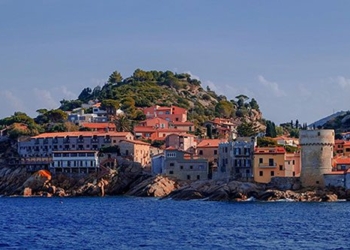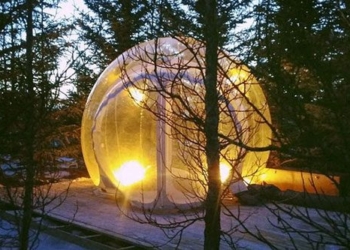After hundreds of years of being forgotten, this cave once again astonishes many visitors with its enchanting beauty.
For a long time, Italy has been an ideal travel destination for many adventure seekers. When mentioning this Mediterranean country, many people immediately think of its major cities with famous Roman landmarks such as the Colosseum, the Trevi Fountain,… or the museums and chapels housing the renowned artworks of Michelangelo and Da Vinci.
However, the stunning natural scenery is also a captivating aspect that attracts tourists, and the Blue Grotto is a must-visit site when traveling to the southern part of the country.

The enchanting scenery in the Blue Grotto with glowing waters.
The Emperor Tiberius’s Swimming Pool
Located on the coast of the island of Capri in southern Italy, this cave is likened to a masterpiece of nature with its mesmerizing turquoise waters. The Blue Grotto is relatively modest in size, measuring only 60 meters in length and 25 meters in width, but it reaches a depth of 150 meters and contains an intriguing historical narrative.
From the statues discovered within the cave, archaeologists assert that the Blue Grotto was known since ancient Roman times. The statues depicting deities such as Poseidon and Triton are believed to have been commissioned by the Roman Emperor Tiberius after he moved the capital of the Roman Empire to the island of Capri in 27 AD.
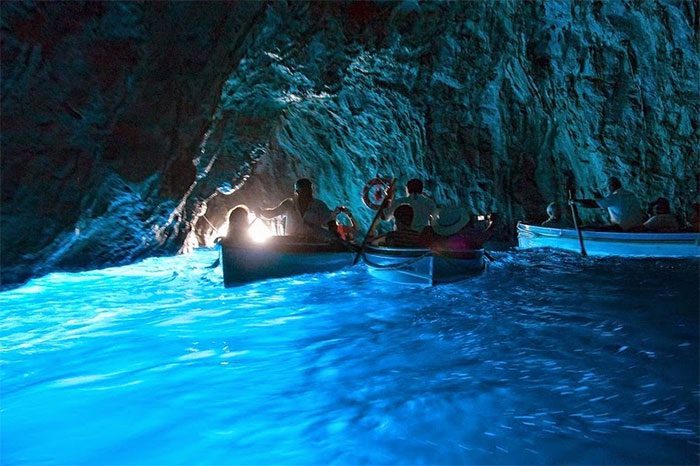
This was once the swimming pool of the Roman Emperor.
Mesmerizing Blue Light
The light in the cave comes from two sources: one is a small hole in the cave wall, which has a diameter of one and a half meters and serves as the entrance to the cave. The second source of light in the Blue Grotto comes from a larger submerged hole located just below the entrance.
When sunlight passes through this submerged hole and reflects off the water’s surface inside the cave, it resembles a neon light. This creates a glowing turquoise hue that illuminates the mystical cave, reminiscent of scenes from fairy tale movies.
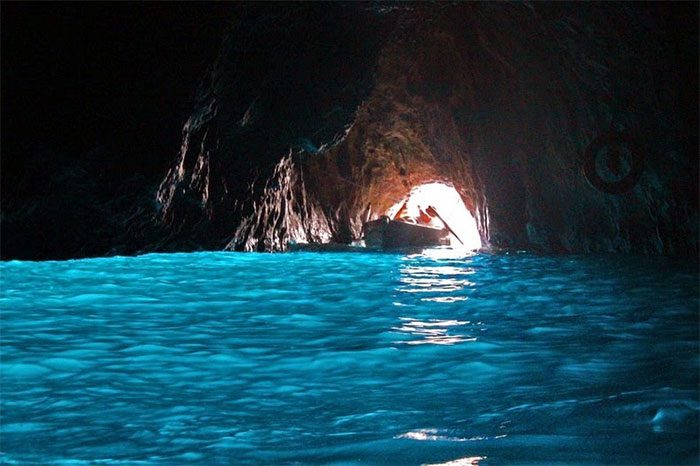
The large submerged hole beneath the cave entrance is the main source of light in this cave.
Despite its stunning beauty, few people know that the Blue Grotto was completely forgotten for hundreds of years. It wasn’t until 1826 that Polish poet August Kopisch and his close friend Ernest Fries were so impressed by the cave’s beauty that they described it in their book “Entdeckung der blauen Grotte auf der Insel Capri”.
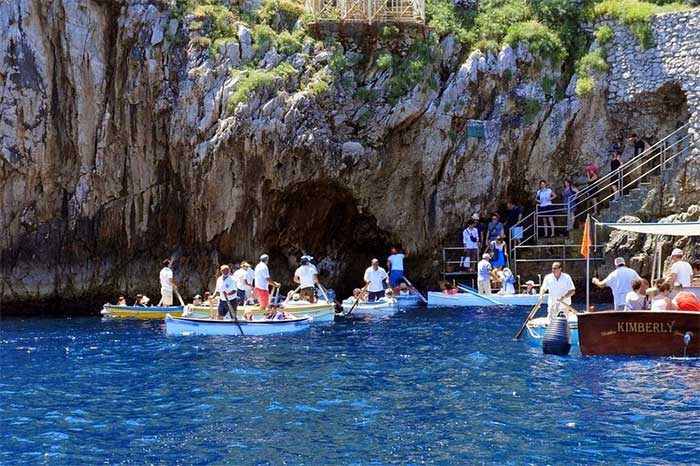
The entrance to the Blue Grotto is now bustling with tourist boats.
Later, poet Wilhelm Waiblinger continued to write praises for this cave, which garnered much attention from Grand Tour travelers visiting Capri. Since then, this cave has returned to the map of Italian tourism and remains a popular destination for many visitors when they set foot in Capri.








































